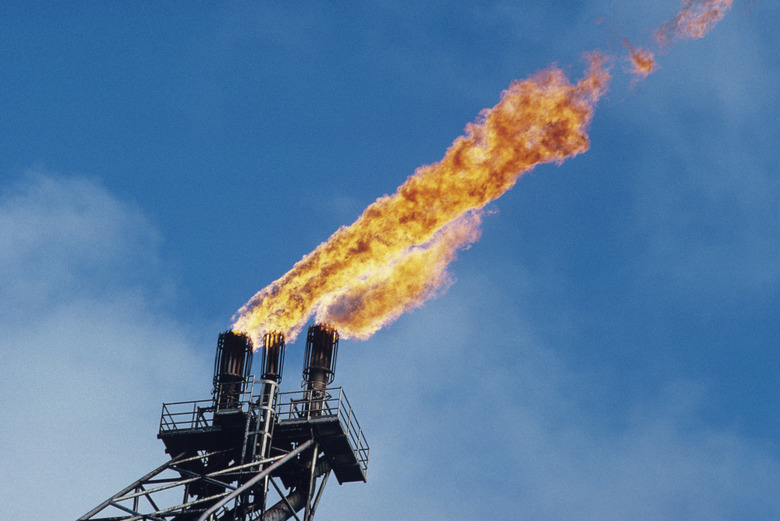Negative Effects Of Fossil Fuel
Fossil fuels form after plants and animals decompose for millions of years. They contain carbon and hydrogen and are buried deep in the Earth's crust. There are a few main types of fossil fuels, including coal, oil and natural gas. In the United States, 81% of the total energy we use comes from these fossil fuels. You may use them to heat your home, run your car or provide electricity to your neighborhoods and businesses. Though fossil fuels power many important processes, the downside is that these energy sources are responsible for nearly 75% of human-related emissions in the last 20 years. There are many negative effects of fossil fuels on the environment.
Types of Fossil Fuels
Types of Fossil Fuels
Coal, oil (petroleum) and natural gas are three main types of fossil fuels. Coal is the result of millions of years of heat and pressure being applied to decayed plant and animal matter. More than 50% of coal's weight comes from fossilized plant material.
Before extraction, oil exists as a liquified layer of material between sedimentary rock. Engineers refine this material into a variety of products, from gasoline to plastics to toothpaste. Natural gas is mostly made up of a gas called methane, and is also found in sedimentary rock layers, often in pockets above oil deposits. Though these natural resources are useful, they are also finite resources, which means they will run out.
Degrading the Land
Degrading the Land
The extraction of fossil fuels takes an enormous toll on the landscape. Fossil fuel extraction not only requires the main extraction site to be disturbed (like a mine), but also requires large areas of land for infrastructure such as access roads, pipelines, processing facilities and waste storage. These actions are so destructive that the land will not be able to recover after the extraction operations are over, leaving wildlife habitats fragmented and destroyed. This loss of habitat is a serious negative environmental impact of fossil fuels.
Water Pollution
Water Pollution
Extracting fossil fuels also threatens our waterways, groundwater and oceans. Coal mining operations wash acid runoff into streams, which then runs into rivers and lakes. When oil is being extracted and transported, there is always the chance of a spill, which pollutes drinking water and puts an entire freshwater or marine ecosystem in danger. Drilling and fracking for oil also creates huge amounts of wastewater filled with heavy metals and radioactive materials, which often leak out of the underground wells they are stored in.
Burning Fossil Fuels
Burning Fossil Fuels
At this point you may be wondering, why is burning fossil fuels bad for the environment? Do fossil fuels cause pollution? The answer is yes. When we burn fossil fuels like coal, oil and natural gas, we emit large amounts of carbon dioxide into the atmosphere. This then traps heat in the atmosphere and leads to a changing climate. Roughly three-quarters of carbon emissions in the United States come from burning fossil fuels.
Carbon dioxide is not the only type of fossil fuel emission. When we burn coal in power plants, dangerous mercury emissions are generated. Coal burning also emits soot and sulfur dioxide. Smog in our cities is created by poisonous carbon monoxide and nitrogen oxide from our fossil fuel-powered cars, trucks and boats. Breathing in smog can lead to respiratory illnesses.
Ocean Acidification
Ocean Acidification
The carbon emissions that enter the atmosphere when fossil fuels are burned also have an impact on the ocean's chemistry. Up to a quarter of all human-powered carbon emissions are absorbed by the ocean, which has become 30% more acidic since the beginning of the Industrial Revolution. When our oceans become more acidic, there is less calcium carbonate available for oysters, lobsters and many other marine organisms to grow shells. This can have negative implications for entire food chains.
Cite This Article
MLA
Taylor, Lindsey. "Negative Effects Of Fossil Fuel" sciencing.com, https://www.sciencing.com/negative-effects-of-fossil-fuel-13425073/. 20 October 2021.
APA
Taylor, Lindsey. (2021, October 20). Negative Effects Of Fossil Fuel. sciencing.com. Retrieved from https://www.sciencing.com/negative-effects-of-fossil-fuel-13425073/
Chicago
Taylor, Lindsey. Negative Effects Of Fossil Fuel last modified March 24, 2022. https://www.sciencing.com/negative-effects-of-fossil-fuel-13425073/
